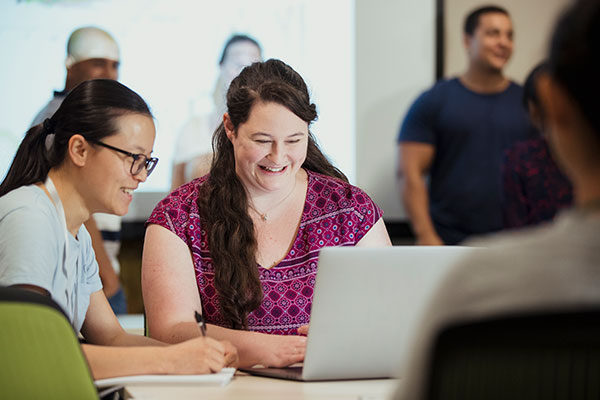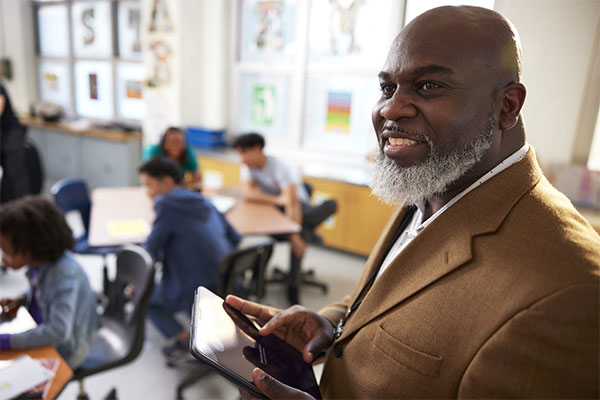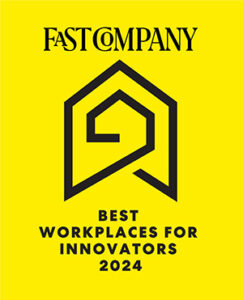December 1, 2023
In October, the Software & Information Industry Association (SIIA) released its Principles for the Future of AI in Education at a special event held at the US Capitol. These seven principles stress the responsible use of artificial intelligence (AI) in education technology, with an emphasis on meeting students’ and teachers’ needs, ensuring data protection and privacy, and promoting equity and inclusion.
Jon Medin, Vice President of Psychometrics, Research, Learning Sciences, & Innovation, represented Renaissance at the Capitol Hill event. In his remarks to legislators and congressional staff, Medin explained how Renaissance is using AI to deliver new insights to educators and leaders. He also reaffirmed our commitment to the “purposeful, transparent, and equitable implementation of AI technologies” in our Renaissance ecosystem.
Recently, Todd Brekhus, Chief Product Officer at Renaissance and General Manager of Nearpod, had the opportunity to discuss this commitment in detail with Jon and two colleagues:
- Andrew Martin, Senior Director of Engineering—Data Ecosystem
- Julianne Robar, Senior Director of Metadata and Product Interoperability
Highlights from their conversation appear below.

Commitment #1: Using AI in education purposefully
Todd Brekhus: Let’s start by providing our audience with some context. How did each of you come to Renaissance, and how does this connect to the work you’re currently doing with AI?
Jon Medin: I spent more than 20 years in the legal division at Thomson Reuters, where we created an AI-enabled product to predict how individual judges might rule in a case, based on their prior rulings. This is obviously helpful information for attorneys to have. It’s also helpful for the judges, giving them insights into whether their rulings diverge from other judges’ rulings in similar cases, and whether they might have biases they aren’t aware of.
This use of predictive modeling and AI is equally valuable in education, especially when we think about students who need specific supports and scaffolds to be successful. My spouse is a special education teacher, so I’m very familiar with the challenges educators face every day, in terms of analyzing data to identify patterns and determine the best next steps to take.
AI can really be a force for good here, helping teachers to cut through the “noise” and more easily locate the right scaffolds and the most impactful interventions—not just for the students who are easy to reach, but also for those who are hard to reach. I find this really compelling.
Andrew Martin: I’m a former classroom teacher and school and district administrator. I went into education with the goal of reaching students who weren’t being served well by the current system—who weren’t necessarily finding classrooms that were geared toward ensuring they were able to read on grade level and were on track for success in college and career.
That was always my motivation, and I came to Renaissance because I could continue to address these issues but at a much larger scale. Millions of students and educators have used Renaissance solutions over the years, and now we’re at a point where large language models and other AI tools allow us to write more software, and to put more intelligence and more guidance into our solutions.
I believe that Renaissance can be a leader here, using data from multiple sources to bring greater clarity to educators. For example, we’ve seen thousands of fourth graders who have the same misconception about place value—and we can show you the best steps to take to address this. We’ve seen 100,000 ninth graders with similar patterns of poor attendance and low grades, and we can identify the most effective interventions to change this.
To me, AI in education is just another way of knowing, of taking the thousands of interactions that teachers have had with students and using the power of machine learning to point educators in the direction of what’s most likely to help students to learn and grow. And we can do this at scale, helping teachers not just in individual schools but across the country and even around the world.
Todd Brekhus: I love those examples, which really illustrate Renaissance’s commitment to helping educators to truly see every student. Julianne, I’d like to bring you into the conversation, because you’ve been at Renaissance the longest of any of us.
Julianne Robar: My background is in high school math education, and I joined Renaissance more than twenty years ago as an assessment content developer. Back then, my team was already using algorithms to help generate test items based on different variables, so that every student in a classroom would receive a similar item, but with different numbers or scenarios.
At that time, Renaissance was serving millions of students. Now, we serve tens of millions of students around the world, which is where my interest in AI comes in. How can we use new technologies to amplify what we’re already doing—to take our human excellence and apply it at scale to reach the maximum number of learners?
To give one example: we have decades of experience creating assessment items and instructional resources aligned to each state’s learning standards. We’ve taken this extensive experience in content creation and alignment—and all of the data we’ve amassed—and used it to create an AI model to identify potential candidate matches. A human editor then reviews the item or resource to verify the alignment to a particular standard.
This increases our editors’ productivity and results in even closer connections between assessment, instruction, and standards within our Renaissance ecosystem. This is a clear example of how AI is helping us to create smarter systems that lessen educators’ “decision fatigue”—in this case, by weeding out resources that don’t align with the standard they’re teaching.
Blending AI and human excellence
Discover Renaissance’s connected solutions for assessment, instruction, and practice.

Commitment #2: Using AI in education transparently
Todd Brekhus: There’s a common misconception that AI could someday replace teachers. How can we assure educators that they’re not facing a dystopian scenario here, with the machines taking over?
Jon Medin: I think everyone has heard about the recent Executive Order on AI in education. This was based on the work the US Department of Education has been doing, and the guidelines they’ve been building around keeping humans in the loop. Renaissance is committed to following these guidelines and to using AI responsibly and transparently. Along with our internal controls, we have external advisors and boards who review our new products and how we’re using AI.
As an attorney, I obviously take privacy and data protection very seriously. The data that we’re analyzing with our AI tools and models is deidentified, meaning that it can’t be tied to a particular student. Also, everything is controlled by access, using safeguards that we built into our systems from the very beginning.
Todd Brekhus: That’s such an important point, and it really highlights our commitment to using AI ethically and thoughtfully within our products. Andrew, what’s your take on this—on how we assure teachers that the “droids” aren’t taking over?
Andrew Martin: It’s a great question. I wouldn’t want to live in a world where, for example, I go to buy the latest Michael Lewis book and have to wade through 17 pages of machine-generated nonsense, all designed to get me to click. This is the “bad future” scenario, where AI is used to create endless spam or bad copies of things.
Clearly, no one wants this—certainly not in education, where bombarding students with auto-generated worksheets is the opposite of the learning experience we want to provide. Instead, we want to make the most of the human expertise we’ve already developed, so educators are assured they’re receiving the quality content they expect from us.
Take Accelerated Reader as an example. Over the last 35 years, our content teams have written quizzes for more than 200,000 books. If students want to read Harry Potter, or The Hunger Games, or the latest book about dinosaurs, they’re covered. But what about students with very unique interests?
Back in 2006, I had a student who was fascinated by transportation—in fact, he now works for the New York City Transit Authority. After the first month of school, he’d read every book in the library about subways. Next, he wanted to read a book about trains that had been published 17 years earlier—clearly not something that many students were asking to read!
Now, a company without a strong ethical grounding might take the path of least resistance here, using AI to churn out a million low-quality book quizzes, just to cover all of the bases. But this is hardly doing justice to either the books or the students. So, our approach at Renaissance is very different. Yes, we can use AI to generate the first draft of a book quiz—which is then turned over to human editors for review and revision.
Students’ passions and interests obviously matter to us, but in the past, we didn’t necessarily have the resources to produce quizzes for 17-year-old books about trains. Through the responsible use of AI, this is much more feasible today, allowing us to create quality AR quizzes at a much greater scale, covering a wider variety of books and interests.

Commitment #3: Using AI in education equitably
Todd Brekhus: We keep coming back to the themes of human excellence and “humans in the loop.” Julianne, what’s your perspective on this—and on using AI to promote educational equity?
Julianne Robar: I think everyone who’s been following the conversation about generative AI understands the potential risks, in terms of whether it’s providing inaccurate information or using biased language. This is where our human editors are absolutely essential, to ensure that the assessment and instructional content we’re putting in front of students is factual, bias-free, and grade-appropriate.
I think there’s also a really interesting opportunity for the classroom. AI and large language models will be the tools of the future workforce, so students need to learn to use them responsibly and to understand the AI models’ current limitations.
This is where critical thinking skills really come into play. I can imagine a teacher sharing two passages with students—one written by a human and the other by AI—and asking the students to identify which is which, to fact-check the statements, and to call out potential inaccuracies or biases.
Andrew Martin: We’ve definitely reached an inflection point in terms of technological change, where AI allows us to build better systems than we’ve ever had before, giving us new and better ways to reach every student. Take our eduCLIMBER MTSS management platform as an example.
In the past, the success of a school’s MTSS framework often depended on the skill level of the interventionists who were on-staff. How many years of experience did they have? How adept were they at analyzing data? With the use of AI, Renaissance now has the ability to really raise the floor, so that any school can leverage the intelligence that’s built into the system to identify the best interventions for each learner.
Clearly, eduCLIMBER won’t replace the humans in this scenario. eduCLIMBER is a tool—a sort of virtual assistant—that sits by the educator’s side, using predictive modeling and data from millions of interactions to help design a set of educational experiences that will accelerate each student’s progress.
Julianne Robar: I recently heard AI described this way: Imagine you have someone who’s been playing the cello for twenty years and someone who’s played it for one year. If you listen to each of them play, you’ll likely hear some similarities at first. But when the music (the output) is amplified, you’ll really hear the difference between twenty years of expertise and one year.
This is what AI can do in education. We know the stakes are high in terms of the content we’re putting in front of students. We want it to be accurate and engaging. We want it to be free of bias. We want it to spark ideas and curiosity, and to accelerate every student’s learning.
In short, we want to capture and amplify those twenty years of expertise so that all students benefit, and this is what the responsible use of AI can help us to achieve.
Learn more
To explore how Renaissance’s connected solutions will help to accelerate your students’ learning, please reach out.

